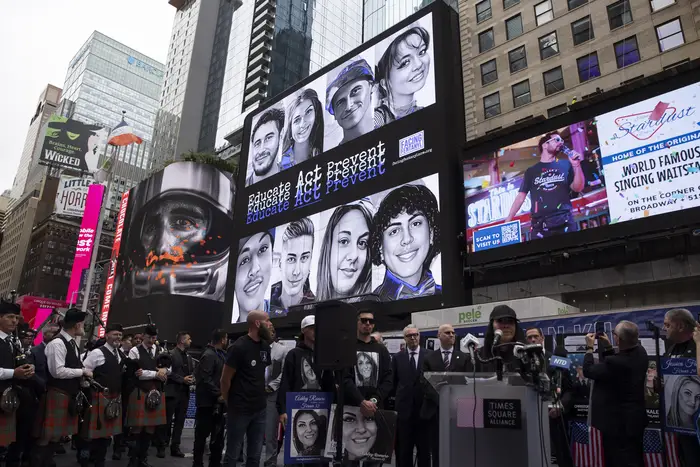URGENT UPDATE: New York City has achieved a significant milestone in its battle against drug overdoses, reporting a 28% decrease in deaths for 2024. The city recorded 2,192 accidental overdose deaths last year, compared to 3,056 in 2023, according to preliminary data released by the city health department.
This promising trend aligns with a national decline in overdose deaths, reflecting a growing effort to combat the opioid crisis. Mayor Eric Adams emphasized the importance of continued progress, stating,
“Progress on reducing opioid overdoses will never make up for the families that have been devastated…but it gives us hope that brighter days are ahead.”
Despite this positive news, challenges remain. The city’s initiative, HealthyNYC, aims to reduce annual overdose deaths to 1,812 by 2030. However, disparities persist, with the Bronx experiencing a death rate more than double that of Manhattan, despite a 24% reduction in deaths last year. Local advocate Marilyn Reyes warns that continued policing of drug users disrupts vital outreach efforts, stating,
“If we don’t continue on the path of reducing harm, we’re going to continue losing more people in the black and brown community.”
The latest data marks the first decrease in overdose deaths among Black and Latino New Yorkers since 2018, with improvements seen across all five boroughs. Staten Island reported the largest drop at an astounding 49%. Yet, Toni Smith, state director for the Drug Policy Alliance, cautions that the illegal drug supply’s unpredictability could jeopardize this progress.
New York City has received approximately $190 million from legal settlements with opioid manufacturers. This funding is poised to grow to $550 million by 2041, fueling efforts to enhance treatment and harm reduction programs. Dr. Michelle Morse, the acting city health commissioner, stresses the need for sustained investment in life-saving initiatives.
While Mayor Adams has supported the establishment of two overdose prevention centers, advocates argue that more are needed. The legal status of these centers remains precarious under federal law. In the recent mayoral debate, candidates expressed varying views on the future of these crucial facilities.
As the city navigates this pivotal moment, the next mayor will face the critical task of maintaining momentum in reducing overdose deaths. Authorities urge continued investment in effective solutions to address the ongoing crisis.
The latest developments underscore the urgency of this public health issue. The city’s commitment to tackling the overdose epidemic is essential for restoring hope and healing to affected communities. As this situation evolves, all eyes will be on New York City to see if it can sustain this momentum and address the disparities that still exist.






